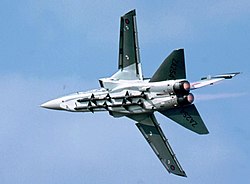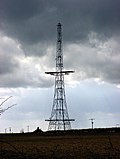An inverse monopulse seeker is a type of semi-active radar homing that offers significant advantages over earlier designs. The system requires electronics...
8 KB (1,356 words) - 23:57, 3 July 2025
Raytheon conical scanning seeker with a Marconi inverse monopulse seeker that worked with the F-4's radar. Monopulse seekers are more accurate, less susceptible...
8 KB (902 words) - 17:58, 28 November 2024
the early 1970s, the RAF developed the Skyflash version with an inverse monopulse seeker[citation needed] and improved motor, while the Italian Air Force...
34 KB (3,471 words) - 01:28, 20 July 2025
as a Sparrow variant. Compared to Sparrow, Aspide features an inverse monopulse seeker that is far more accurate and much less susceptible to ECM than...
13 KB (1,300 words) - 07:34, 1 July 2025
MiG-25. It has built in semi-active radar homing (R-40R), with an inverse monopulse seeker which give the missile ability to engage targets in all-aspects...
9 KB (735 words) - 12:17, 29 June 2025
air-to-air missile Y Y Y Y Y Y Skyflash Development of Sparrow with inverse monopulse seeker Y Y Y Y Y Y AIM-9 Sidewinder IR air-to-air missile Initially fitted...
68 KB (3,765 words) - 16:53, 28 June 2025
post-war radars, were matured in the late 1940s-early 1950s: pulse Doppler, monopulse, phased array, and synthetic aperture; the first three were known and...
152 KB (22,372 words) - 12:59, 17 July 2025
beams. The antenna is mechanically rotated. Semi-active radar homing uses monopulse radar that relies on a fixed phased array to produce multiple adjacent...
50 KB (5,633 words) - 04:29, 15 July 2025
Guard's WMEC and WHEC ships can track one air or surface target using the monopulse tracker and two surface or shore targets. Oliver Hazard Perry-class frigates...
79 KB (10,705 words) - 19:22, 21 June 2025








